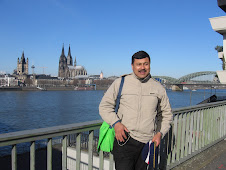Common Property Resource (CPR) management plays an important role in efficient use, equitable allocation and sustainable conservation, which does not lead to a 'tragedy of commons'. However, the studies on CPR management have questioned the equity outcomes. This paper reviews the analytical frameworks, equity in terms of both procedural and distributional aspects, and attributes conditioning CPR management. The analytical frameworks conceptualise CPR management as the pattern of interaction which are conditioned by the technical and physical attributes of the resource, the decision making arrangements between the resource users. This interaction produces a certain outcome in terms of costs and benefits for the resource users, differences in their interests and in terms of efficiency and equity of resource use. The review reveals that resources are heterogeneous in terms of species diversity, use and exchange values guided by interests from the local to central levels. The communities are heterogeneous in terms of class, caste/ethnicity, gender, their power relation, norms, values, access to resource. The paper concludes that CPR management should be contextualized to heterogeneous resource and socio-political setting of the community for crafting institution that facilitate equitable decision making processes and distribution of benefits to all segments of the community. Understanding the concepts and issues on CPR management has implications to policies, strategies and programmes to ensure sustainable CPR management.
The article is on progress
My Brief Biography

- BASAN SHRESTHA
- I am Basan Shrestha from Kathmandu, Nepal. I am a development professional with expertise in socio-economic research, monitoring and documentation. I hold 3 master degrees 1) MSc in Regional and Rural Development Planning, Asian Institute of Technology, Thailand, 2002; 2) MSc in Statistics, Tribhuvan University (TU), Kathmandu, Nepal, 1995; and 3) MA in Sociology, TU, 1997. I have gained professional experience for more than 10 years in socio-economic research, monitoring and documentation on agricultural and natural resource management. I had worked in Lumle Agricultural Research Centre, western Nepal from 1997 to 2000; CARE Nepal (SAGUN Program), mid-western Nepal from 2003 to 2006 and Western Terai Landscape Complex Project in far-western Nepal from 2006 onwards. I have published some articles to my credit. With my sound academic background and professional experience, I am much encouraged to undertake PhD to explore equity in Community Forest Management analysing both procedural and distributional aspects. Your kind cooperation, if any, to link with the concerned personnel and authorities would be instrumental and appreciated.
Wednesday, April 22, 2009
Tuesday, April 14, 2009
Participatory Planning, Monitoring and Evaluation: An Approach to Sustainable Development
Participation of different groups excluded from the development process has been an important issue at times when Nepal is engaged in drafting a new constitution and discussing on the federal structure. With the declaration of a Federal Democratic Republic Nepal. indigenous people and local communities have demanded to establish their rights to and benefits from managing water, land and forest resources. They have long been managing the natural resource and sustainably using for their livelihoods. Besides, they have also contributed to mitigating global carbon emission. They can not claim their rights without sustainable resource management policies, programmes and development process. The development process will be sustainable if the excluded groups actively participate in planning, monitoring and evaluation (PME) processes. Thus, the policies, strategic and operational plans, and programmes need to prioritise participatory planning, monitoring and evaluation (PPME) as an approach to sustainable development.
This article is under progress.
This article is under progress.
Subscribe to:
Posts (Atom)


















